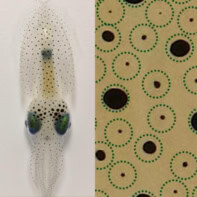
Mind reading has long been relegated to the realm of science fiction. But, with the power of electrodes, researchers are able to detect and monitor neurological signals to gain insight into the activity of the brain.
One of the most exciting applications of this technology is the brain–computer interface (BCI). BCIs that aim to digitize thought patterns – such as the intention to move – could help individuals with loss of motor function, including patients with severe neurological disease or spinal cord injury. Applying BCIs to control assistive technology could repair cognitive-sensory function, even for those who are left “locked-in”, providing them with an avenue to communicate and interact with the world around them.
Wired versus wireless BCIs
One of the major obstacles inhibiting the use of BCIs outside of a laboratory setting is the cumbersome system of wires needed to transfer the large amount of data collected from the brain to a computer.
Enter BrainGate, an interdisciplinary research team involving Brown University, Massachusetts General Hospital, Stanford University, Case Western Reserve University and Providence VA Medical Center. With a focus on practical applications and reliability, the team aims to develop assistive BCI technology to restore independence and communication in individuals with impaired movement abilities.
The team’s most recent work, published in IEEE Transactions on Biomedical Engineering, details a clinical trial of a new wireless BCI called the Brown Wireless Device (BWD). The two study participants, aged 63 and 35, suffer from tetraplegia (paralysis of all four limbs) caused by spinal cord injuries.
The BWD connects to two 96-channel silicon microelectrode arrays via the same ports used for studies with wired BCI systems. The intracortically-implanted electrodes detect neural activity from a part of the frontal lobe – specifically, a brain region responsible for motor control. The signal is then amplified and filtered to identify when the patient thinks about moving a limb, which can be used to trigger an action. In this trial, the participants moved a cursor on a tablet computer to type and navigate through applications.
Previous wireless BCIs have not been able to match the fidelity of their wired counterparts, a limitation that is overcome by BrainGate’s high-bandwidth transmission protocol. The patients achieved comparable point-and-click accuracy and typing speeds with the BWD as when using a wired BCI.

Stable recordings enable ‘plug-and-play’ control of brain–computer interface
By minimizing power consumption, the BWD battery lasts up to 36 hr, enabling a participant’s brain activity to be recorded in their own home for 24 hr continuously.
“With this system, we’re able to look at brain activity, at home, over long periods in a way that was nearly impossible before. This will help us to design decoding algorithms that provide for the seamless, intuitive, reliable restoration of communication and mobility for people with paralysis,” says Leigh Hochberg, leader of the BrainGate clinical trial, in a recent press release.
The researchers have developed a fully implantable version of the BWD and validated it in primates. They are currently preparing the device for regulatory approval prior to human clinical trials.



